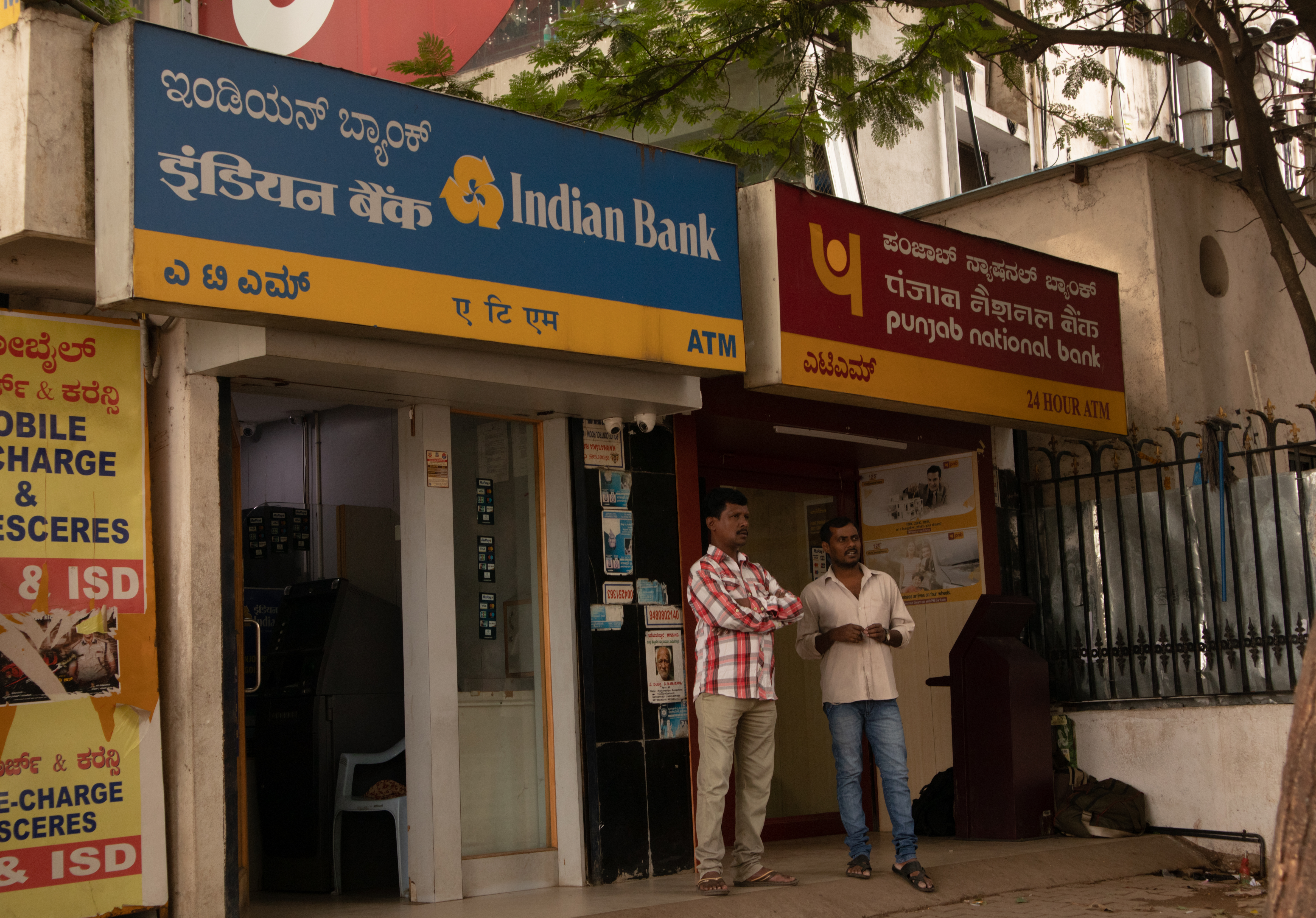.png)

Babuji K is a career central banker with 35 years at RBI in exchange rate management, reserve operations, supervision, and training.
October 28, 2025 at 7:20 AM IST
For most, the money market is invisible. It hums in the background, greasing the daily flow of credit that keeps banks funded, companies solvent, and governments afloat. Only when that hum falters does the world notice.
Right now, the sound is steady enough. But beneath the surface calm, the instruments that measure stress in global funding markets are showing mild tension.
Four gauges tell us how relaxed or restless the money markets really are. The Across-the-Curve Credit Spread Index and its broader cousin, the Financial Conditions Index, reveal how much extra investors demand to lend. The foreign-exchange swap basis shows whether dollars are easy or difficult to find. And the Secured Overnight Financing Rate anchors it all. Together, they show a system that’s steadier than it was a year ago but still watchful.
Reading the Signals
With LIBOR permanently ceased in September 2024, the Across-the-Curve Credit Spread Index has emerged as one of the credit-sensitive benchmarks. AXI is a weighted average of credit spreads on unsecured U.S. bank funding transactions across maturities from overnight to five years, developed as a credit-sensitive add-on to SOFR. When it rises, it means lenders are charging more for risk, which is an early sign that faith in counterparties is thinning.
The Invesco SOFR Academy FXI measures credit spreads on US corporate bonds, with narrower spreads indicating looser financial conditions and wider spreads suggesting tighter conditions. The FXI casts a wider net, capturing corporate and non-bank credit spreads as well. When this widens relative to AXI, it hints that anxiety is seeping beyond the banking system into the broader economy.
Then there’s the FX Swap Basis. That’s the cost of obtaining dollars through the foreign exchange market rather than directly. When this premium climbs, it suggests a shortage of dollars or a sudden preference for holding them, the kind of funding stress that defined both the 2008 crash and the early days of the pandemic.
Finally, the Secured Overnight Financing Rate replaced LIBOR as the primary benchmark for short-term dollar rates. Introduced by the Federal Reserve Bank of New York, SOFR is based on transactions in the Treasury repurchase market, where dealers and investors lend cash overnight, secured by US Treasuries, providing a transparent, transaction-based measure encompassing approximately $1 trillion in daily transactions.
Global Pulse
Following the March 2023 regional banking crisis—including Silicon Valley Bank and Signature Bank failures—both AXI and FXI elevated significantly but remained below 2008 or 2020 crisis levels. Quick regulatory action stopped panic from spreading, but the indices never returned to the ultra-low readings of 2021–2022. The market has settled into a warier rhythm, pricing in risk more deliberately.
The gap between AXI and FXI has stayed stable, which tells us stress is contained within banks rather than leaking into the corporate sphere. Add SOFR to that mix and you get a broadly healthy funding landscape: cautious, but functional.
The picture is similarly steady in currency markets. FX swap basis spreads for the euro and yen against the dollar remain narrow, a sign that dollar liquidity is circulating efficiently. The Federal Reserve’s standing swap lines with other central banks have anchored confidence that if things tighten, help is ready and waiting.
SOFR itself has been uneventful, trading with low volatility. It has hovered comfortably within the Fed’s target range, while the Standing Repo Facility has seen minimal use. Together, those are quiet but powerful indicators that the plumbing of the system is still working.
Alternative Assets
Gold has been climbing even as everything else looks oddly calm. Equities tick along, bond yields barely swing, yet the metal refuses to cool. All while credit spreads and funding costs show contained stress.
This isn’t panic buying into gold. Central banks are edging away from the dollar, investors are hedging against politics rather than profits, and there’s a faint but growing doubt about the paper promises that underpin fiat money.
It’s not speculative frenzy so much as a rational, if cautious, repositioning. Still, sentiment has grown frothy enough to suggest gold’s near-term path may be bumpy.
Cryptocurrencies have followed a similar pattern. Bitcoin’s leap past $100,000 has less to do with speculative mania and more with institutional interest and a broader search for alternatives. In a sense, gold and crypto now play parallel roles as different generations express the same anxiety about value and control.
India’s Steady Hand
On the surface, the rest of the market has taken all this in stride. The Sensex and Nifty have remained stable through bouts of global volatility, supported by solid corporate earnings and a steady trickle of foreign money. Currency market conditions have remained volatile recently, but the RBI’s active oversight through periodic interventions supported by foreign exchange reserves exceeding $700 billion has calmed nerves.
A June 2025 RBI Bulletin study suggested a new experimental Financial Conditions Index that would aggregate 20 market-based indicators from key financial segments to provide a single number indicating whether financial conditions are "tight" or "easy".
Cautious Balance
Put together, these indicators paint a picture of resilience with an undertone of strain. Markets have absorbed extraordinary pressure: rapid monetary tightening, a banking scare, and an unsettled geopolitical backdrop. Yet the machinery still runs. Credit spreads remain wider than in the days of easy money, but well short of crisis territory.
The stability between AXI and FXI suggests risk is distributed evenly rather than concentrated dangerously in one pocket. Narrow FX swap bases and calm SOFR movements reinforce that liquidity remains available. Institutions are differentiating between counterparties, maintaining liquidity buffers, and managing risk in a world that feels permanently uncertain.
Central banks, too, have learned from past crises. Standing facilities, swap lines, and clearer benchmarks now form a safety net that didn’t exist 15 years ago.
For the moment, both global and Indian markets are managing the strain with surprising composure. Even so, calm shouldn’t be mistaken for comfort. High rates, heavy government debt, and a jittery geopolitical backdrop mean the system is only ever a few shocks away from fresh tension. The balance that exists today is real enough, but it’s hardly built to last.




